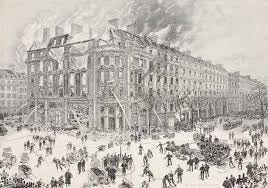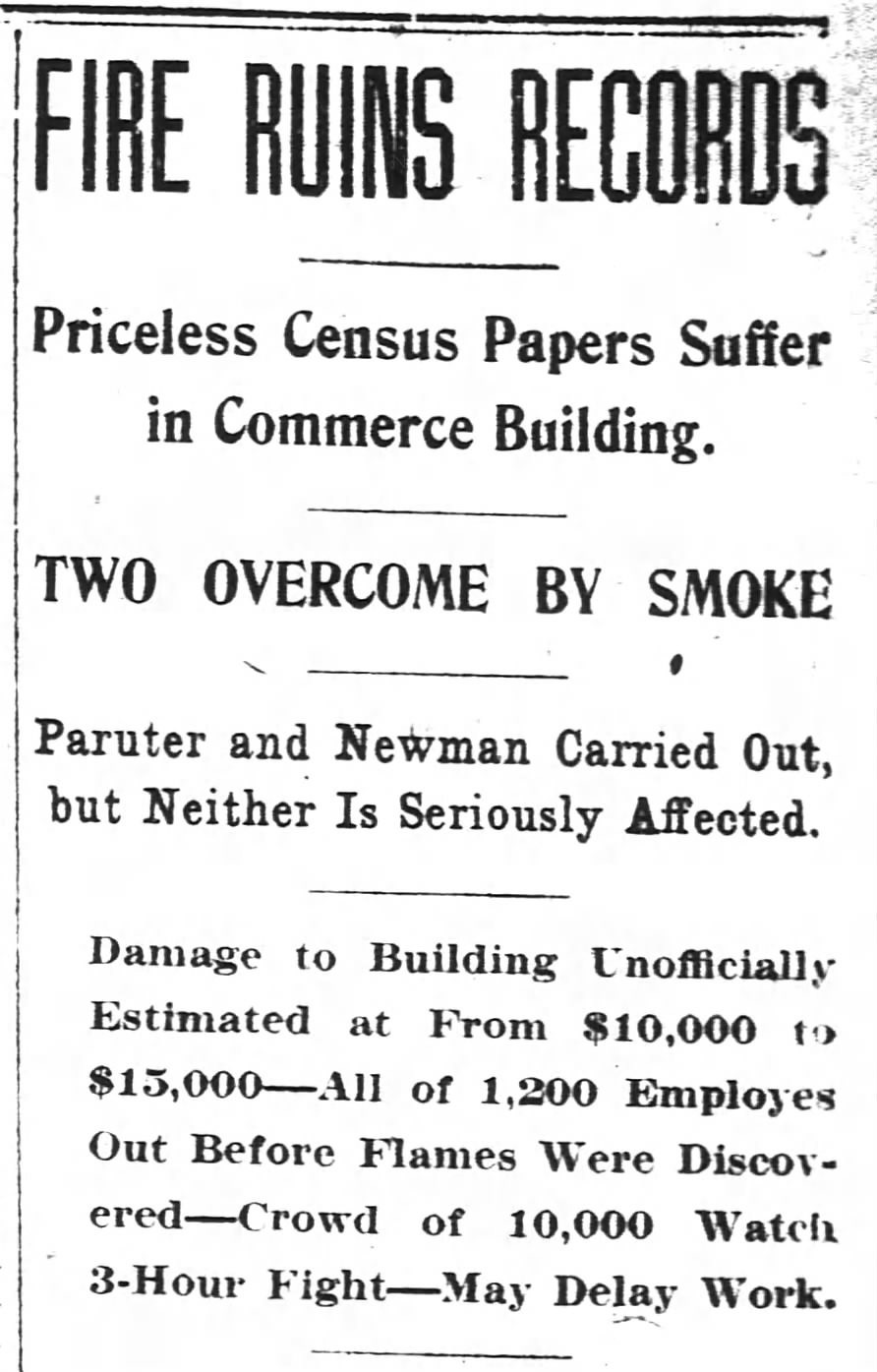On January 10, 1921, around 5:30 p.m., a five-alarm fire broke out in the Commerce Building in Washington, D.C. An employee noticed smoke coming from the elevator shaft and alerted everyone in the building and the fire department.
In the next three hours, the employees and other onlookers watched as the fire department worked diligently to extinguish the flame.
What was burning? The 1890 United States Federal Census.
If you’re new to Genealogy and Family History Research, maybe you have been looking for the 1890 census and haven’t had much luck. Well, it’s not you. It was a natural disaster!
While only 25% of the census initially burned in the fire on that ill-fated Monday, a combination of the fire and the rescue efforts left only around 6,300 intact census records. Between flames, smoke damage, and severe water damage that went unaddressed - the 1890 census was lost,
For the next eleven years, the government failed to rescue the damaged census records. Finally, in 1932, they reached the point of no return and were ordered to be destroyed.
This is a significant loss to the genealogy and historical community because it left a twenty-year gap in Federal Census Records during a time when the population of Americans went from 50,189,209 in 1880 to 76,212,168 in 1900. Plus, due to the influx of immigrants arriving in America during this time, the United States transformed into growing cities filled with people who didn’t live there in 1880.
So, what else was special about the 1890 U.S. Federal Census? It was the first time things got personal.
While genealogists and family historians rely on federal and state censuses to help us pinpoint the location of our ancestors, in reality, these censuses are no more than devices that help our government keep track of its citizens and allow the tax man to know who was where and when they were there.
Yet, in 1880, the Federal Government added and expanded questions that served the Tax Man and Family Historian alike. The 1880 Census information not only provided names, addresses, occupations, and education—it included questions about Civil War service, names of widows of deceased Veterans—which was vital for veterans and their families who wanted to apply for a Pension—and naturalization information.
So, the real question is, how do we fill that twenty-year hole without the help of the 1890 US Federal Census?
Here are a few ideas:
State Censuses
States like New York (1892), New Jersey (1895), and Iowa (1895) often took their own State-Level Censuses. Remember to check with the National and State Archives or local libraries.
City Directories
There were City Directories even before telephones! Annual publications list residents, occupations, and addresses.
Tax Records
The Tax Man was more careful with his papers than the Commerce Department. Remember, property tax assessments and poll tax records.
Newspapers
Newspapers have SO MUCH great information, from obituaries to birth announcements to local news items. Was there a strike? Check the newspaper. Did someone get arrested? Check the newspaper.
Immigration and Naturalization Records
Passenger lists, naturalization petitions! Visit the National Archive for this information. It’s a great place to get started.
1890 Veterans Schedule
You can check out the partial survival of the special schedule for Union veterans and their widows. This information can be cross-referenced with muster rolls and pension records.
As you move through your family history research journey, you will surely hit a snag or two - like the loss of the 1890 US Federal Census. While it may be frustrating, it is best to work around the problem and seek alternate resources.
To learn EVEN MORE about the 1890 Federal Census and the 1921 Fire - head over to the National Archives, and check out - “First in the Path of the Fireman: The Fate of the 1890 Population Census.”
Remember to like this post, share it with your friends, and follow this Substack for more Genealogy Tips and Tricks!








This was the first 1890 census article I’ve read that included newspapers clips and the bit about water damage doing the pages in. Love the research!